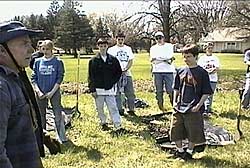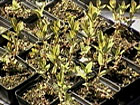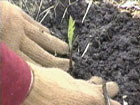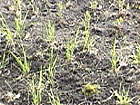NATIVE ECOSYSTEM RESTORATION
History of the Restoration Site
Role of Buffer Sites in Preserving Biodiversity
Project Goals and Purpose
Restoration Strategy and Methods
Site Biodiversity
--Lists of Plants
--Naturally Occurring
--Introduced
--Survivorship Statistics
Education and Outreach
Project Participants
|
Survivorship Statistics Survivorship in the Prairie Triangle, Stream Corridor and Savanna “Although it was not possible to directly determine establishment rates or individual plant survivorship, the success of plant reintroductions has been monitored through seed collection. . . Two species in particular, great St. John's wort and prairie brome, have been surveyed for seed production. Since prairie brome was introduced at the beginning of the second growing season and the plant is a biennial, seeds were collected at the end of the growing season after transplanting. Five times more seed was collected than was used for producing transplants and about 20 per cent of the plants survived to produce seeds. The great St. John's wort is producing seeds two years after transplanting and the seeds are harvested in the fall. ”* “Among the species transplanted along the stream bank, flowers have been observed on big bluestem grass, swamp milkweed, tall coreopsis, Virginia wild rye, rattlesnake master, wild bergamot, Indian grass, common ironweed, yellow coneflower and stiff goldenrod. Seeds from these species are collected in the fall.” “The results of seed collection determine seeding efficiency or the ratio between seeds used to produce transplants and seeds produced at the site. This is a practical way of determining reintroduction success. It also promotes the practice of 'conservation through propagation'” 
Dr. Murray and Riverside-Brookfield High School students Results of the first growing season of the Prairie Garden. “2268 individual plants of 21 species were placed in rows of single species transplants. Each plant occupies an average area of one square foot. Thus, the area of this more traditional seed garden is nearly 3.25 times that of all the other three areas. The low planting density is likely to produce larger quantities of seeds per plant. However, this garden will require a good deal of control of invasive non-native plant species.”
“By early September of the first growing season of the prairie garden, the following species had flowered or set seed:
Fowl manna grass, great St. John's wort and golden Alexanders were present in good numbers. Only sky blue aster showed poor survival.” *All quotes are from Dr. Darrel Murray video photos by Valerie Spale |


